Dear Readers, SBI Clerk (Junior Associates) 2018 Preliminary Examination is scheduled to be held on 23rd, 24th, and 30th of June 2018. In that case, aspirants need to speed up the preparation as there are only few days more.
To boost up your exam preparation, Our IBPS Guide team is providing a full length Sectional Tests for English, Quantitative Aptitude and Reasoning with detailed solutions to score more marks in the prelims exam. Make use of this opportunity and recommend to your friends to achieve a successful career in Banking.
You can also practice using our SBI Clerk Test Series pack prepared by our experienced professionals as per the latest exam pattern. We wish you a great success in all forthcoming exams. Click Here for SBI Clerk Practice Mock Test
Minimum Cut Off for this Quantitative Aptitude Section Test is: 23
[WpProQuiz 2703]
Click “Start Quiz” to attend these Questions and view Solutions
Direction (1-5): In these questions, relationship between different elements is shown in the statements. The statements are followed by two conclusions numbered I and II. Study the conclusions based on the given statements and select the appropriate answer.
a) Only conclusion I follows
b) Only conclusion II follows
c) Neither conclusion I nor conclusion II follows
d) Either conclusion I or conclusion II follows
e) Both conclusion I and conclusion II follows
1). Statement: M < N = F ≤ I ≥ P; W > O = A ≤ F > Z; Z = R > Q
Conclusions:
- M > R
- Q < O
2). Statement: R < P > O = S ≥ K = Z > X ≤ T = P < C
Conclusions:
- Z < O
- O = Z
3). Statement: U > E = H ≤ M = K > F < X = W ≤ Q = P
Conclusions:
- U > X
- X > P
4). Statement: M > N = B ≤ V = C; P > L < K = V ≤ J < H = G
Conclusions:
- N ≤ G
- L < C
5). Statement: O < U = R ≤ E > Y = S; Q < N > S = C < Z
Conclusions:
- E > C
- O < N
Direction (6-10): In each of the questions below is given some statements followed by two conclusions numbered I and II. You have to take the given statements to be true even if they seem to be at variance with commonly known facts. Read all the conclusions and then decide which of the given conclusions logically follows from the given statements disregarding commonly known facts.
a). Only Conclusion I follows
b). Only Conclusion II follows
c). Either Conclusion I or Conclusion II follows
d). Neither Conclusion I nor Conclusion II follows
e). Both Conclusion I and Conclusion II follows
6). Statements:
Some Diode are Triode
No Triode is Transistor
Some Transistor are Capacitor.
Conclusions:
- Some Capacitor are not Diode
- All Diode are not Transistor.
7). Statements:
Some Plastics are Wood
All Wood are Silver
Some Silver are Gold.
Conclusions:
- Some Plastic being Gold is a possibility
- No Gold is Wood
8). Statements:
All Notes are Books
Some Books are Records
No Records are Documents
Conclusions:
- Some Notes are Records
- No Notes are Documents
9). Statements:
Some Tea are Coffee
Some Coffee are Milk
Some Milk are Badam milk.
Conclusions:
- Some Tea being Badam milk is a possibility
- Some Milk being Tea is a possibility
10). Statements:
No Mechanical are Electrical
Some Electrical are Electronics
No Electronics are Computer
Conclusions:
- All Electronics being Mechanical is a possibility
- Some Electrical are not Computer.
Direction (11-15): Read the following information carefully and answer the questions given below.
Eight people P, Q, R, S, T, U, V and W are born in different months viz,. January, February, March, April, May, June, July and August in a same year. They all have different bikes namely Hero, Yamaha, Vespa, Mahindra, Honda, Royal Enfield, Kawasaki and TVS. All the information is not necessary to be in the same order.
The person who has TVS is born in the month which contain less than thirty days. Number of people born before the person who has Honda is same as the number of people born after U, who is younger than the person who born in the month of April. W has Kawasaki bike and who is born in the month which contains 31 days. The person who has Vespa born immediately before S. S is born in the month which contains 31 days. The person who likes Vespa is not born in the month which contains 30 days. W is younger than the person who has Honda bike. The person who has Royal Enfield is elder to the person who has Hero bike. The person who has Mahindra bike is youngest among all. The person who has Hero bike was not born in the month of June. Only two people born between the person who has Yamaha and T. Only one people born between U and P, who does not have Vespa. V does not have Royal Enfield bike and he is elder than Q
11). Name the person who likes Mahindra bike?
a) P
b) Q
c) S
d) R
e) None of these
12). The person who has Honda bike born in which of the following months?
a) January
b) February
c) March
d) April
e) None of these
13). How many people born between the person who likes Vespa and T?
a) One
b) Two
c) Three
d) More than Three
e) None
14). Name the person who has TVS bike?
a) P
b) V
c) S
d) R
e) None of these
15). In which of the following months the person who has Yamaha bike born?
a) June
b) July
c) March
d) August
e) None of these
Direction (16-20): Read the following information carefully and answer the questions given below.
“petrol price increased high” is coded as “O5 V18 W14 S9”
“barrel crude oil quantity” is coded as “O1 V18 O9 B17”
“cost improve develop undertakes” is coded as “G15 V13 K5 H14”
16). What is the code for the word “Region”?
a) F1
b) W6
c) M5
d) U7
e) None of these
17). What is the code for the word “Domestic”?
a) S18
b) X15
c) H24
d) L11
e) None of these
18). What is the code for the word “Revenue”?
a) V5
b) J10
c) F21
d) W4
e) None of these
19). What is the code for the word “Economy”?
a) K15
b) X3
c) A26
d) B3
e) None of these
20). What is the code for the word “Growth”?
a) S19
b) S18
c) T20
d) N14
e) None of these
Direction (21-25): Read the following information carefully and answer the questions given below.
Eight people A, B, C, D, E, F, G and H are sitting in the circular table all facing outside from the centre of the table but not necessary to be in the same order.
H sits second to the right of A, who is an immediate neighbour of C. Only two people sits between C and F. D is an immediate neighbour of F. E sits second to the left of D. G sits immediate right of B, who is not an immediate neighbour of H. E does not sit immediate left of F.
21). Who sits second to the left of B?
a) A
b) C
c) D
d) H
e) None of these
22). If all the people are made to sit in alphabetical order from clockwise direction from A, then how many of them will remains in their original position excluding A?
a) One
b) Two
c) Three
d) More than Three
e) None
23). Who sits third to the right of E?
a) A
b) C
c) D
d) F
e) None of these
24). If A is related to F, B is related to E in certain way based on their arrangement. Then, who among the following person is related to C?
a) G
b) H
c) D
d) E
e) None of these
25). Name the person who sits third to right of C?
a) F
b) H
c) B
d) G
e) None of these
Direction (26-30): Read the following information carefully and answer the questions given below.
GTE TSE PLR EOA TVA EQY
26).If all the words are arranged in alphabetical order from right to left, then which of the following word will be third from the left end?
a) GTE
b) TSE
c) PLR
d) TVA
e) None of these
27). If all the consonants in the words are changed to next letter of the English alphabet, then how many words will be there with more than one vowels?
a) One
b) Two
c) Three
d) More than Three
e) None
28). If all the letters within the words are arranged in alphabetical order from left to right, then how many words are remains unchanged?
a) One
b) Two
c) Three
d) More than Three
e) None
29). If all the letters in the words are arranged in alphabetical order from right to left and all the words are arranged in alphabetical order from right to left. Then which of the following word will be third from the left end?
a) GTE
b) TSE
c) PLR
d) TVA
e) None of these
30). If the first and the last letters in the words are interchanged and then all the words are arranged in alphabetical order from right to left. Then, which of the following words will be third from the right end?
a) GTE
b) TSE
c) PLR
d) TVA
e) None of these
Direction (31-35): Read the following information carefully and answer the questions given below.
Eight people P, Q, R, S, T, U, V and W are living in eight different floors in a building. There all like eight different colours namely Red, Blue, Green, Yellow, Pink, Brown, Grey and Lavender but not necessary to be in the same order.
The person who likes Pink colour lives in floor number 4. U likes Green colour and lives in even numbered floor. Only two persons live between the person who likes Green colour and the person who likes Lavender. T does not live in top most floor. The person who likes Red colour lives immediately above V, who likes Grey colour. The person who likes Yellow colour lives in lowermost floor. The person who likes Blue colour does not live in odd numbered floor. Only two persons live between the person who likes Brown colour and P, who does not likes Red colour. Only two people lives between S and W, who lives immediately below the person who likes Blue colour. T neither likes Brown nor likes Yellow. Q lives one of the floors below T but not below R.
31). Name the person who likes Red colour?
a) T
b) P
c) R
d) S
e) None of these
32). The person who likes Green colour lives in which of the following floors?
a) Floor number 8
b) Floor number 6
c) Floor number 4
d) Floor number 2
e) Cannot be determined
33). Who among the following person likes Pink colour?
a) T
b) P
c) R
d) S
e) None of these
34). How many people lives between the person who lives immediately below Q and the person who likes Blue colour?
a) One
b) Two
c) Three
d) More than Three
e) None
35). W Likes which of the following colours?
a) Red
b) Blue
c) Green
d) Yellow
e) None of these
Answers:
1). Answer: c
- M < N = F > Z = R (False)
- O = A ≤ F > Z = R > Q (False)
2). Answer: d
O = S ≥ K = Z –> Z ≥ O (True)
3). Answer: c
- U > E = H ≤ M = K > F < X (False)
- X = W ≤ Q = P (False)
4). Answer: b
- N = B ≤ V ≤ J < H = G (False)
- L < K = V = C (True)
5). Answer: a
- E > Y = S = C (True)
- O < U = R ≤ E > Y = S < N (False)
Direction (6-10)
6). Answer: d

7). Answer: a
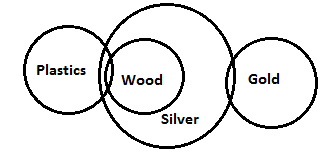
8). Answer: d
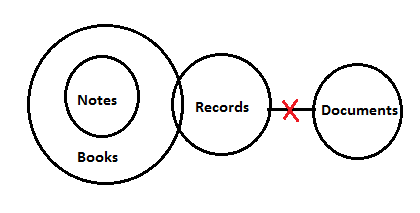
9). Answer: e
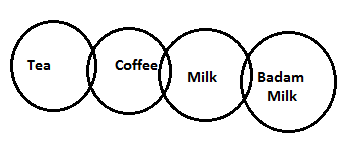
10). Answer: b

Direction (11-15):
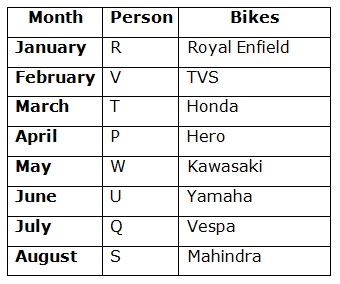
11). Answer: C
12). Answer: C
13). Answer: C
14). Answer: B
15). Answer: A
Direction (16-20)
16). Answer: C
17). Answer: B
18). Answer: A
19). Answer: D
20). Answer: B
Logic –> Letter denotes reverse of last letter of the word
Number denotes the place value of second letter of the word.
Direction (21-25):
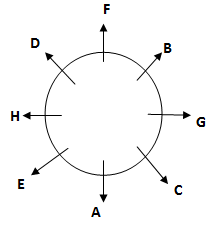
21). Answer: c
22). Answer: B
23). Answer: D
24). Answer: C
25). Answer: B
Direction (26-30)
26). Answer: C

27). Answer: D
![]()
28). Answer: A

29). Answer: B

30). Answer: B

Direction (31-35):
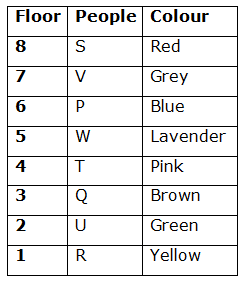
31). Answer: d
32). Answer: d
33). Answer: a
34). Answer: c
35). Answer: e





